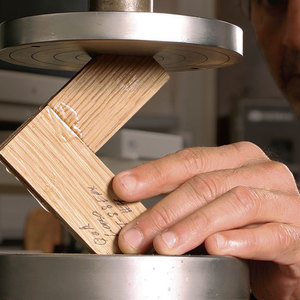Testing Wood Glues
A scientific approach to measuring the strength of various adhesives from yellow glue to epoxyFine Woodworking managing editor Mark Schofield goes behind the scenes of our methodical glue stress test to show you how we tested six types of wood glue. Schofield heads to the Department of Materials Science and Engineering at Case Western Reserve University for a peak at the Instron joint-breaking machine in action.
The glues tested included a traditional yellow polyvinyl acetate (PVA) glue, a Type I waterproof PVA, a liquid hide glue, a hot hide glue, a slow-set epoxy, and a polyurethane. Each glue was tested using three types of joints on three types of wood.























Comments
now that was a great test and a great waste of my time still don't know what glues are the best. disappointed yes.
Thank you
Here is a link to the article that answers the question of which glue is strongest in what type of joints: https://www.finewoodworking.com/2007/07/01/how-strong-is-your-glue
I have to agree with user-7722919. By the time he says he's not going to waste my time, he's already wasted my time. Besides, this is not even current testing. I read that test years ago.
It may be interesting to know that Glue A is stronger than Glue B in a certain joint and that this joint is stronger than that joint. But, these tests never answer the real question: What is strong enough or what strength is required in a certain application? That would be a test which would result in meaningful information. Am I over building my joinery or do I need to strengthen it.
This was pretty disappointing. I remembered the 2007 article but didn't realize this referred to that. At the time, my takeaway was, "OK". Interesting, but not particularly useful. It seemed like under most conditions any glue was adequate. If your joints are weak, you will likely have issues.
For me, the real question would be, "How do I get the best glue adhesion on joints like but joints or miters?" These are joints that we all need to do our best work with. Do we lightly coat each surface? Do we slather on glue and clean up the squeeze out? How long is "best" for clamping?
Videos online show all variations and each presenter says: "This is the best way". How can you help us with that?
Like others, an old test and dubious test/results.
Why was that joint used for the test joint, and why test in sheer? The joint was not clamped, contrary to the glue manufacturer's recommendation (except maybe for epoxy -- which will fill gaps).
A very important factor other than strength is “how long will the glue last”. My harpsichord is 26 years old. I don’t want to wake up one morning to find it in pieces on the floor. So far so good.
Log in or create an account to post a comment.
Sign up Log in